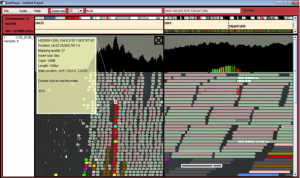Venue: Biomedicum 1, Meeting room 1
Timing: 15:30 – 17:00
Speaker: Christian Benner, PhD Student
FINEMAP: Ultrafast high-resolution fine-mapping using summary data from genome-wide association studies
Genome-Wide Association Studies (GWAS) have identified thousands of loci associated with complex diseases. A next crucial step is fine-mapping: identifying causal variants that point to molecular mechanisms behind the associations and, eventually, suggest therapeutic targets. Recently, fine-mapping methods have been extended to use only GWAS summary data together with pairwise correlations of the variants. Common to these approaches is that they rely on computationally expensive exhaustive search restricting their use to a few hundred variants. We introduce a software package FINEMAP that replaces the exhaustive search by an ultrafast stochastic search and thereby allows fine-mapping analyses to scale up to whole chromosomes.
We show that FINEMAP (1) opens up completely new opportunities by, e.g., exploring 15q21/LIPC locus for high-density-lipoprotein (HDL) with 20,000 variants in less than 90 seconds while exhaustive search would require more than 9,000 years, (2) provides similar accuracy to exhaustive search when the latter can be completed, (3) achieves even higher accuracy when the latter must be restricted due to computational reasons, and (4) identifies more plausible variant combinations than conditional analysis. At 15q21/LIPC locus with at least a 3-SNP association pattern with HDL, a missense variant and a promoter polymorphism are likely to be causal whereas the lead variant in single-SNP testing has less evidence than a regulatory variant correlated with it.
We believe that FINEMAP’s approach of jointly modeling the whole locus together with its unprecedented computational efficiency will help reveal valuable knowledge that could otherwise remain hidden due to limitations of existing fine-mapping methods.
http://bioinformatics.oxfordjournals.org/content/early/2016/01/14/bioinformatics.btw018.abstract


